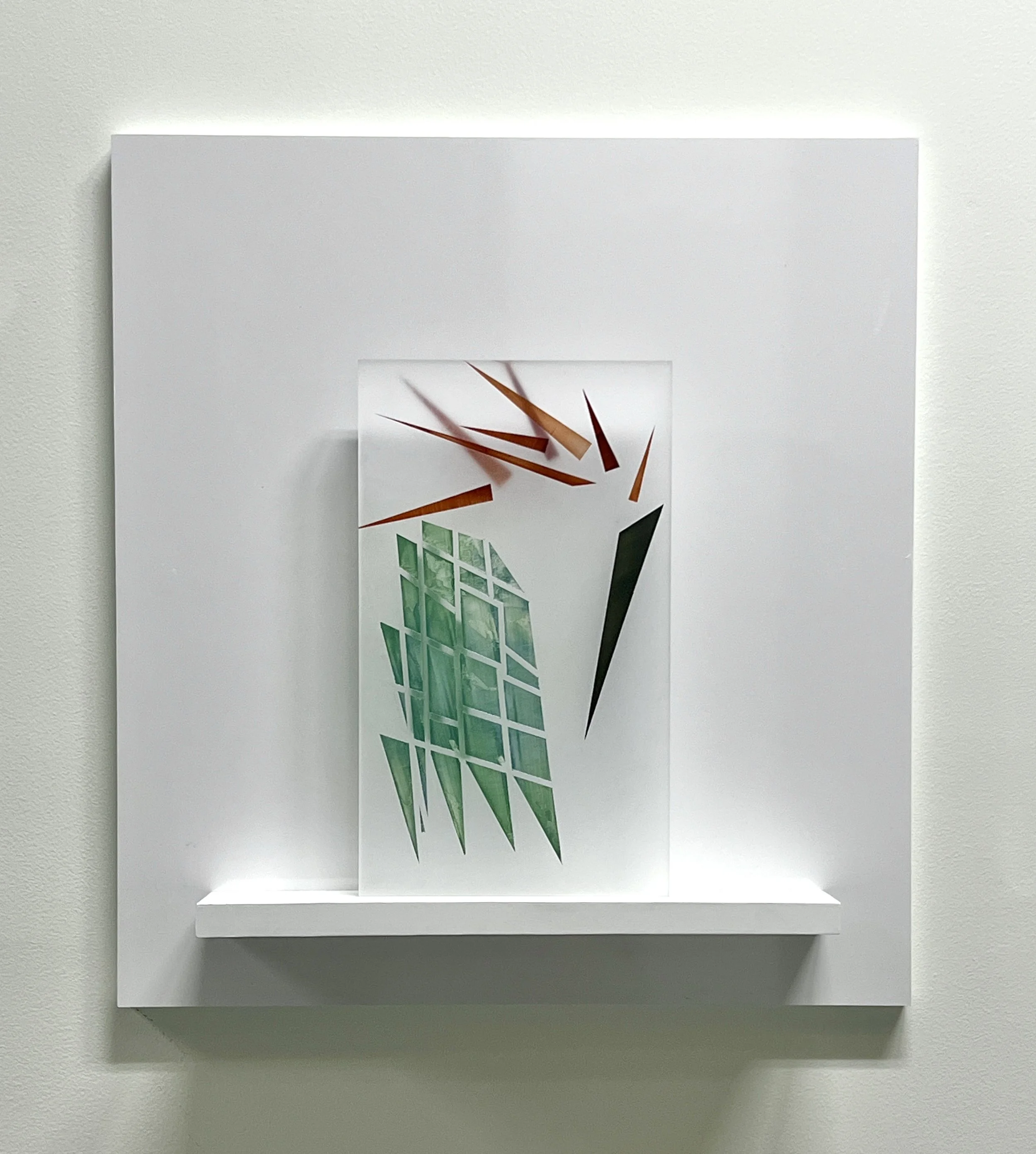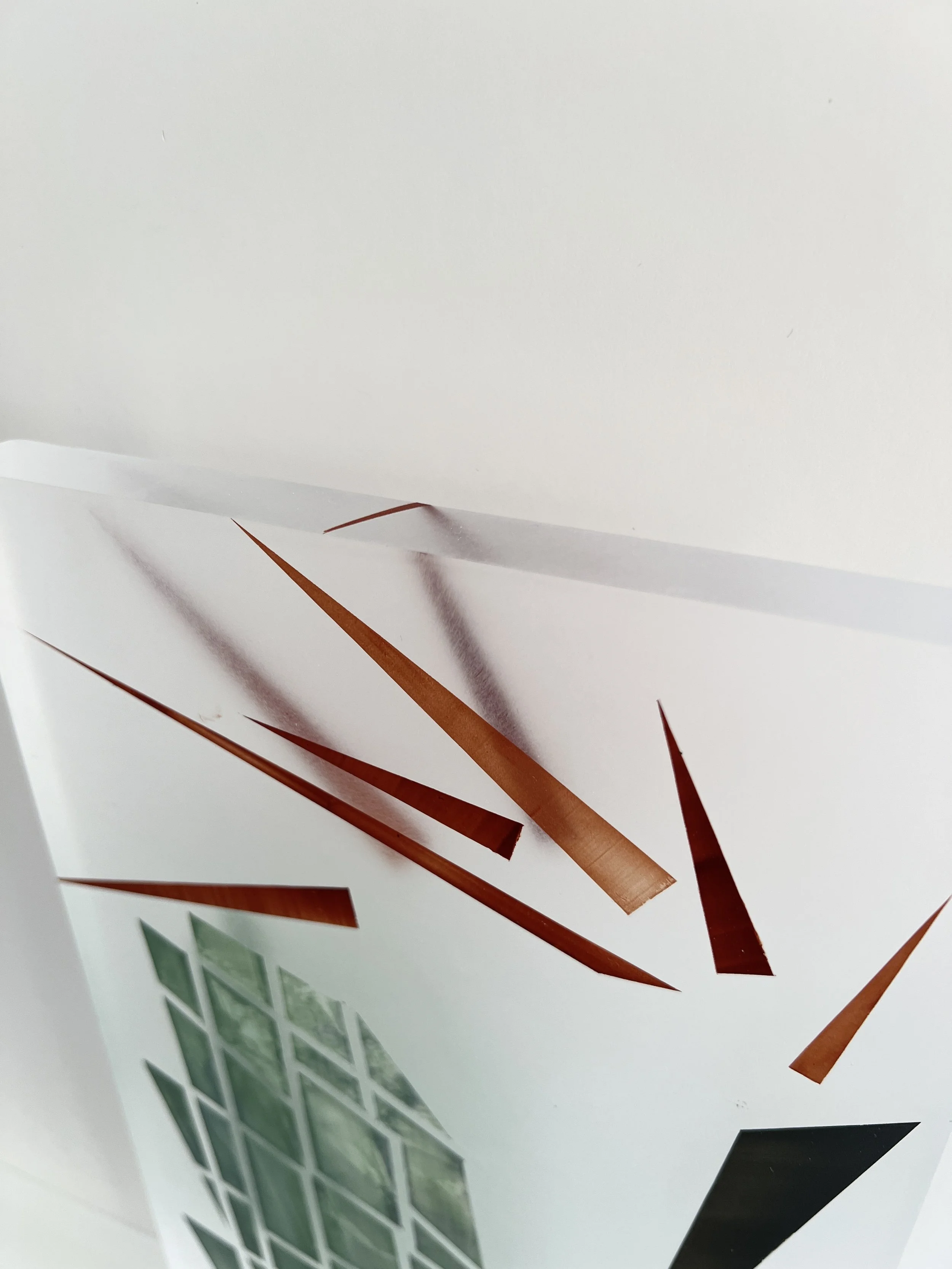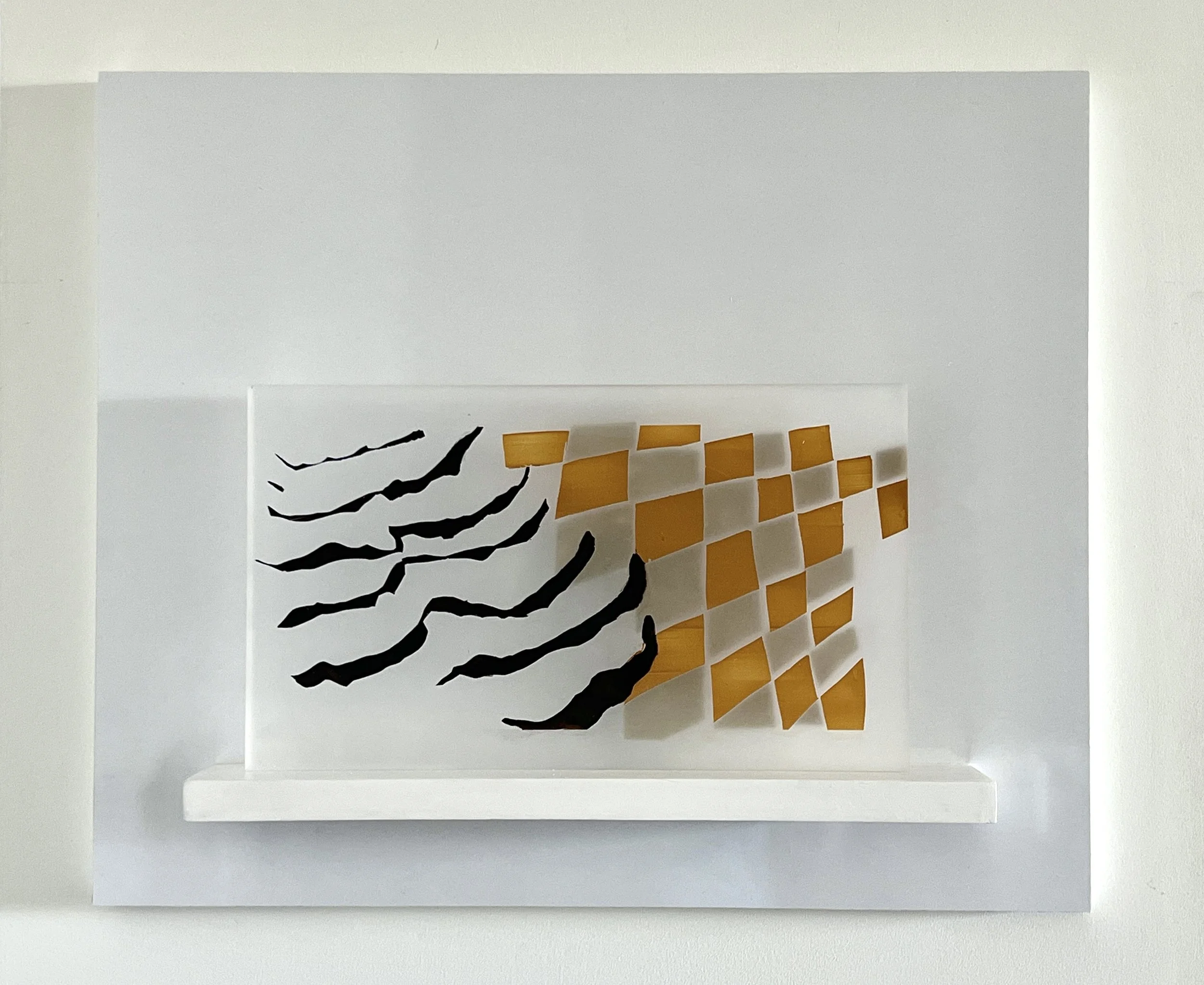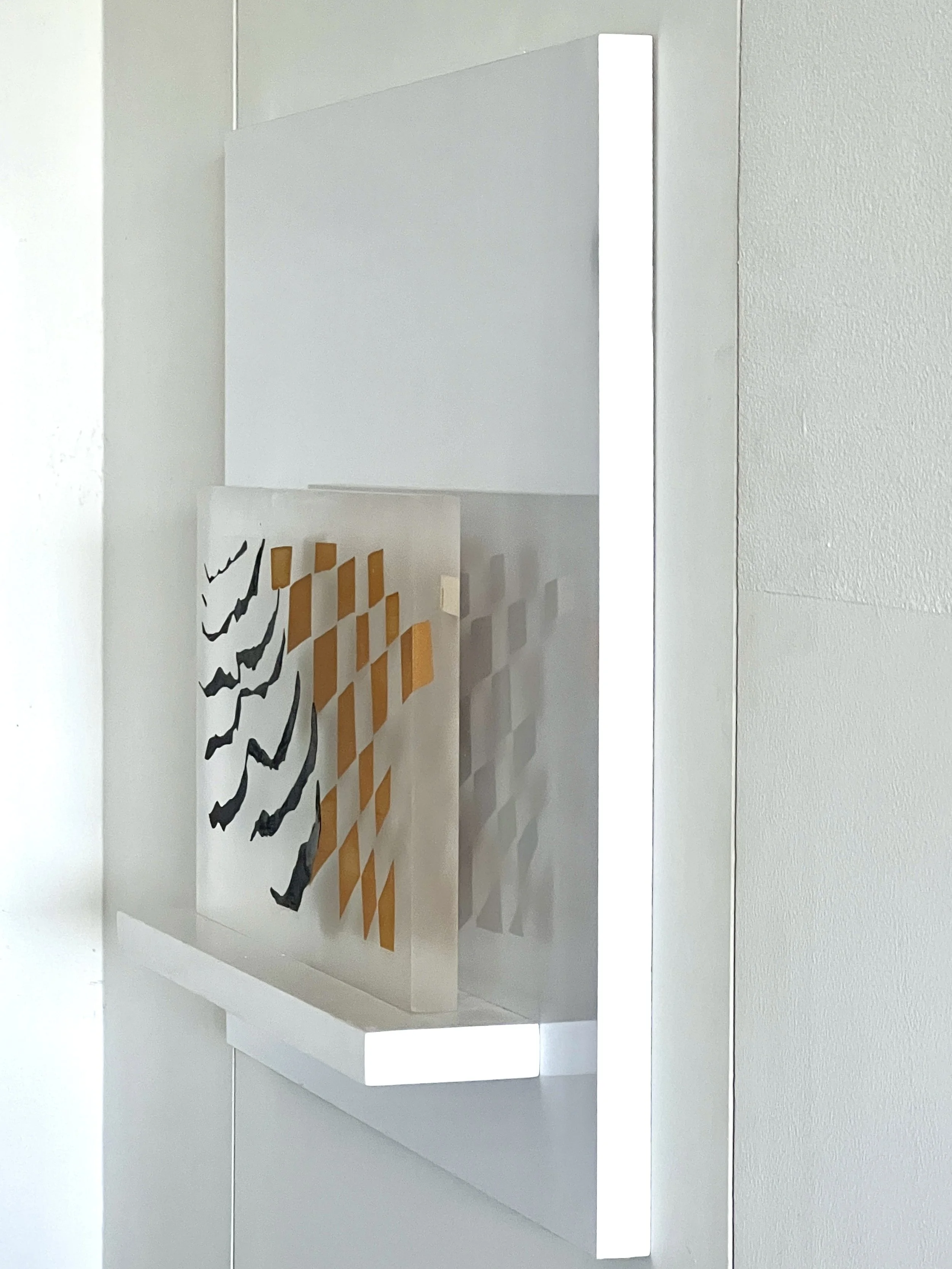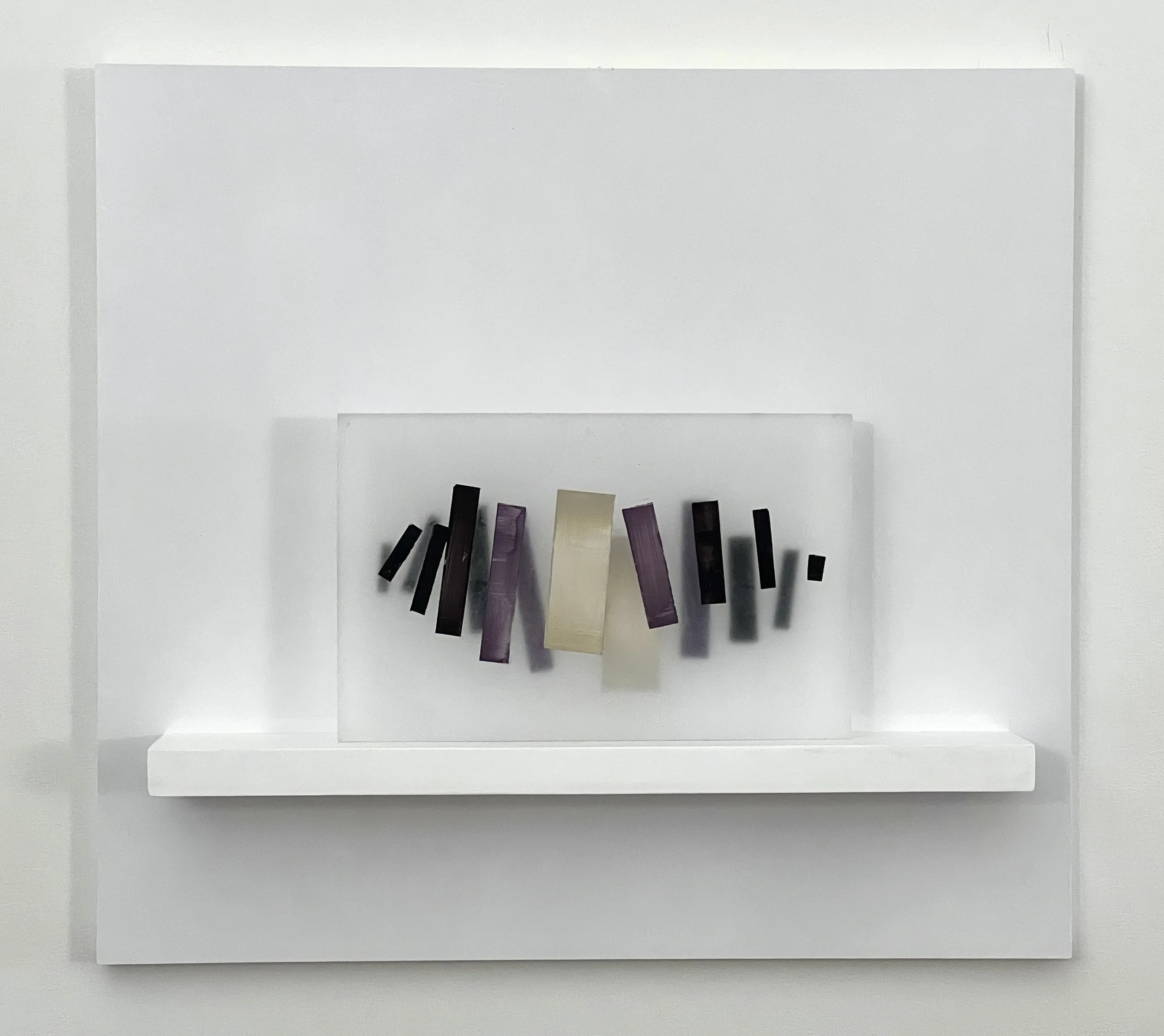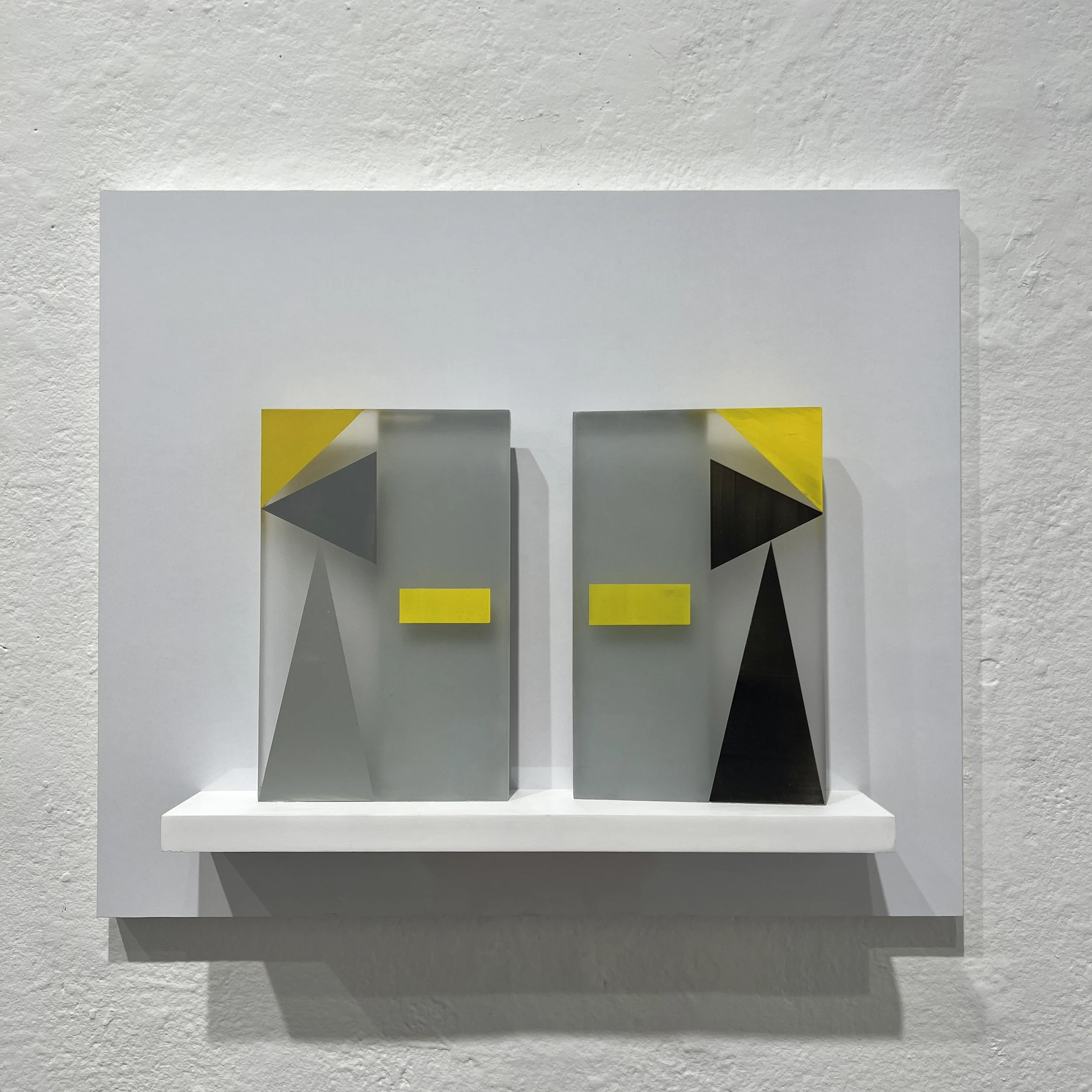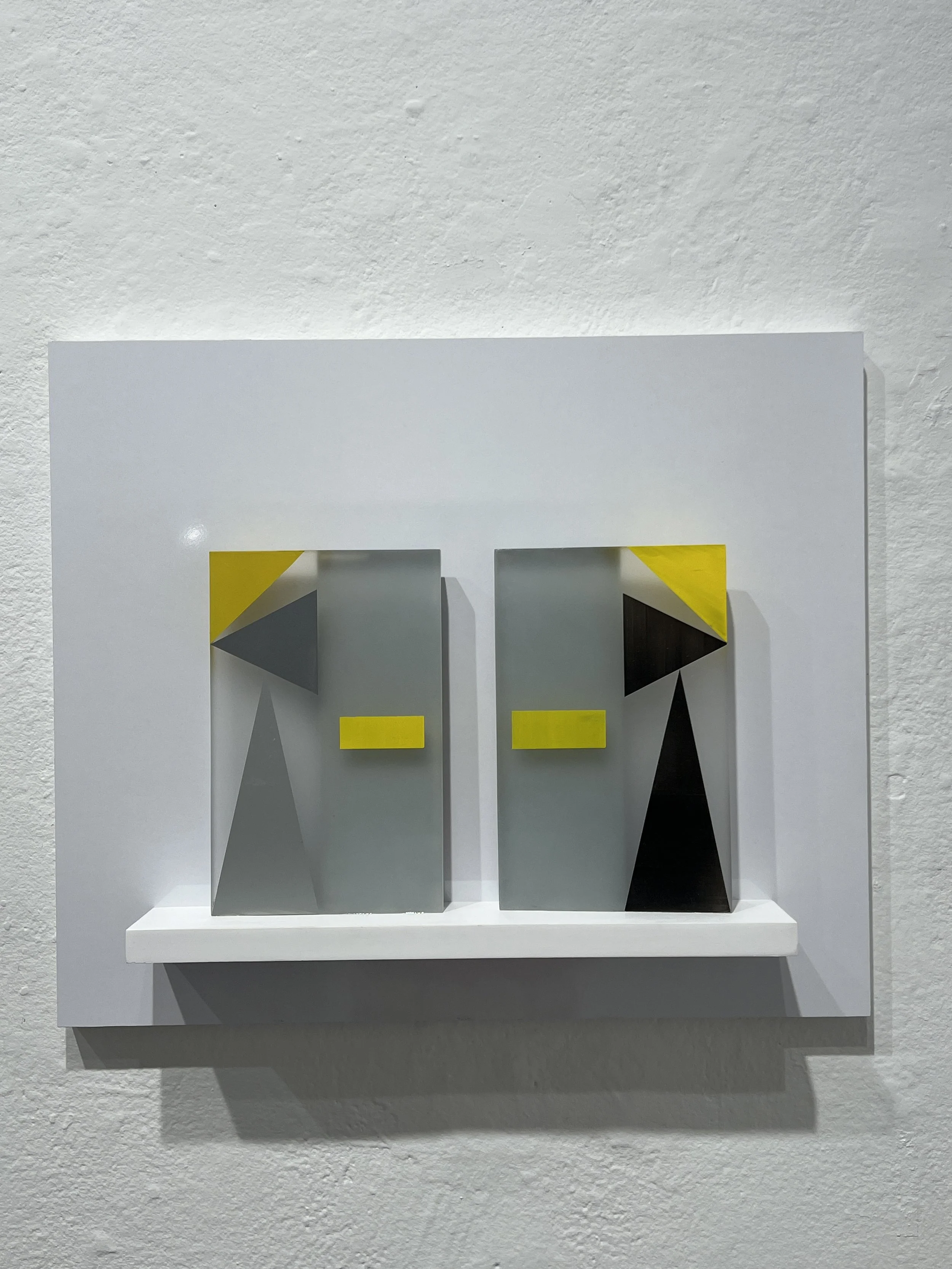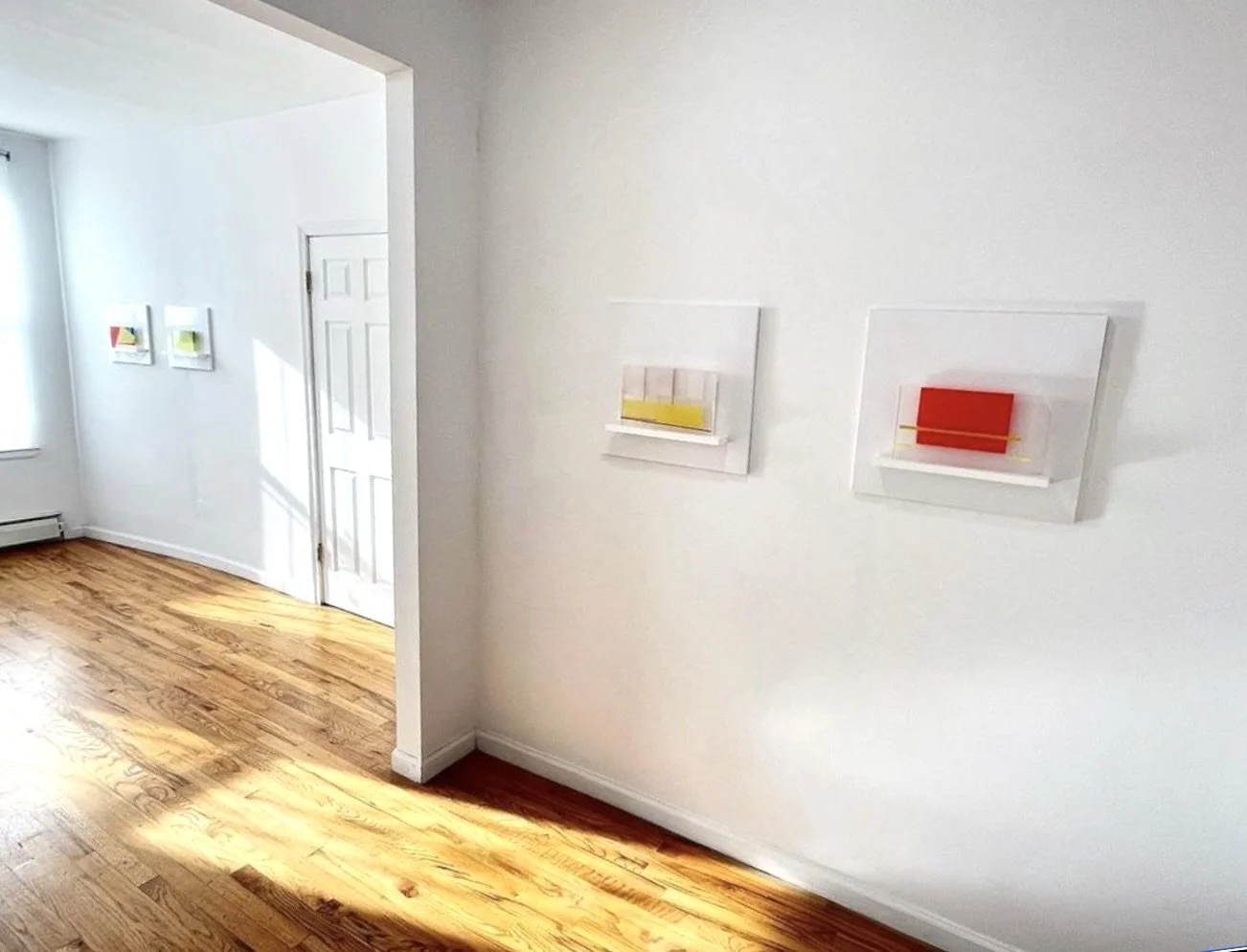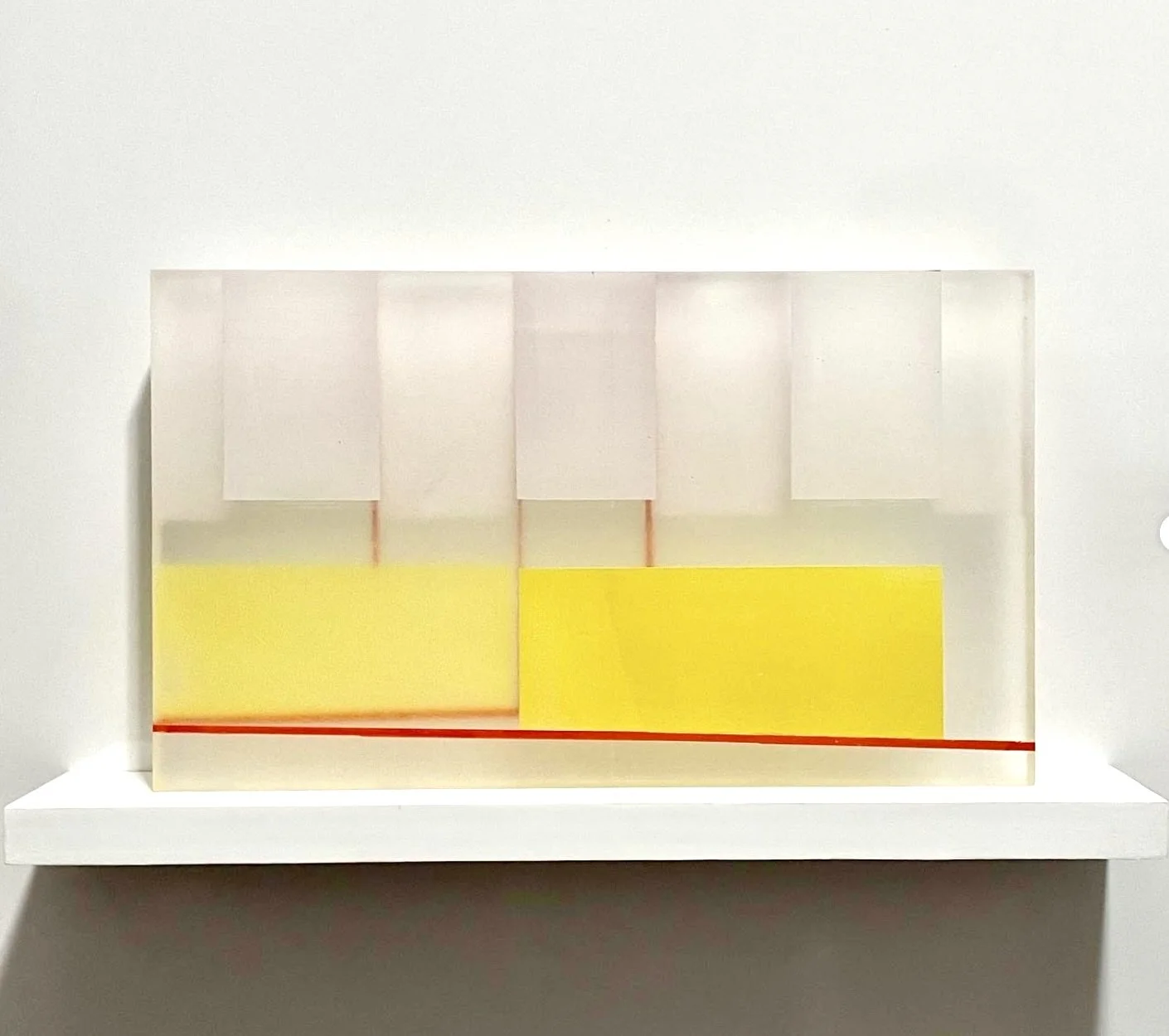MIGRATION Series
Green Heron - 2024, acrylic on cast acrylic panel, 12.25 x 7.25 x .75 inches
One of the world's few tool using birds. It creates fishing lures with feathers, insects and twigs, etc. There's iridescence in this painting, as in the bird's feathers, but not captured in this image.
Green Heron - 2024, acrylic on cast acrylic panel, 12.25 x 7.25 x .75 inches
As displayed on shelf
Green Heron (edge detail) - 2024, acrylic on cast acrylic panel, 12.25 x 7.25 x .75 inches
Green Heron - living inspiration in the wild.
Eastern Whip-Poor-Will - 2024, Acrylic on cast acrylic panel, 7.25 x 12.25 x .75 inches
Shelf: gloss formica, MDF, Pine, 16 x 19 x 3.5 inches
Homage to the Eastern Whip-poor-will. A species that times its egg-laying to coincide with a full moon so it can forage for insects at night to feed its young. Within the Nightjar family, it is named onomatopoeically after its song.
Eastern Whip-poor-will, (detail) - 2024, Acrylic on cast acrylic panel, 7.25 x 12.25 x .75 inches / Shelf: gloss formica, MDF, Pine, 16 x 19 x 3.5
Eastern Whip-poor-will, (detail) - 2024, Acrylic on cast acrylic panel, 7.25 x 12.25 x .75 inches
Chimney Swift - 2024, Acrylic on cast acrylic panel 5.25 x 8.25 x .75 inches, 2024 / shelf: gloss formica, MDF, Pine, 14.75 x 16 x 3 inches - An homage to the Chimney Swift. “This enigmatic little cigar-shaped bird spends almost its entire life airborne. When it lands, it can’t perch—it clings to vertical walls inside chimneys or in hollow trees or caves. This species has suffered sharp declines as chimneys fall into disuse across the continent.“
Ruby-crowned Kinglet - 2022, Acrylic on cast acrylic panel, 5.25 x 8.25 x .75 inches - Ruby-crowned Kinglet, a bird species that migrates through Central Park twice a year, encounters many obstacles during migration including decreasing size of its breeding areas.Ruby-crowned Kinglet on shelf
Ruby-crowned Kinglet (detail) - 2022, Acrylic on cast acrylic panel, 5.25 x 8.25 x .75 inches / Shelf: gloss formica, MDF, Pine, 14.75 x 16 x 3 inches
Continuing my exploration of using color to portray the passage of time, this ongoing series captures the plumage colors of migratory birds in Central Park, NYC, throughout a year. Each specific bird spends a predictable amount of time in the park, twice a year, on its journey in search of primary resources: food and nesting locations.
I receive daily eBird alerts from the Cornell Lab of Ornithology, providing confirmed data on bird sightings in Central Park. Using this information as a foundation, I use online resources to learn about the specific species, including its migratory patterns, behaviors, calls, and songs. This immersive process can take days to weeks until I develop a comprehensive understanding of the unique qualities of that bird. While I strive to study both male and female birds, information regarding female birds is often less readily available.
During this time of getting to know the bird, I decide on three distinct plumage colors to represent it. These colors are then mixed using digital tools to create accurate color representations avoiding any personal color preferences. Drawing inspiration from my experiences as a novice birdwatcher and aiming to evoke a similar experience for the viewer, I apply colors to the acrylic panels to manipulate visibility as the viewer moves, challenging spatial expectations. For example: a color you see from a side angle may not be visible from a frontal view. The artwork is enlivened by the viewer’s motion. The unpainted areas on the panels suggest the open air where these birds thrive.
These paintings are the result of extensive research, yet the viewer's experience takes precedence.
This series mirrors my profound respect for the natural world, its cycles, and its inhabitants. With a keen awareness of the fragile state of our environment, each painting serves as a tribute to a species. These artworks become devotional objects, reminding us of the delicate balance that sustains life.

